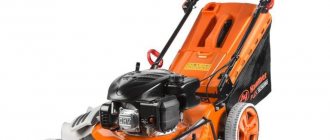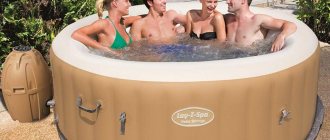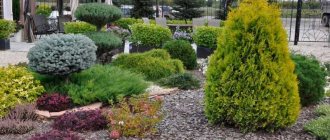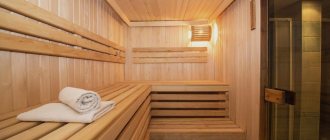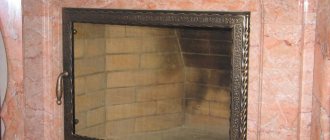What are there
Functions of a plant wall: protective, site zoning, aesthetic.
Green fences are distinguished according to the following parameters:
- Height (up to 60 cm, 1-2 m, above 2 m).
- Width (number of rows).
- Purpose (curb, exterior, landscape).
- Plants (vines, shrubs, conifers, flowering, evergreens).
Sizes from 40 to 60 cm are suitable for borders, 1-2 m for zoning areas, more than 2 m for external fencing (protection from dust and road noise).
Planting width depends on crown density. There are planting options: one row, checkerboard order, 2-3 rows (change of low, medium varieties).
There are types of plantings based on appearance: molded (can be cut), not requiring shaping.
Plants
The selection of plants should be carried out according to categories:
- destination, place of disembarkation;
- annual, perennial species;
- requirements for soil type, lighting, watering;
- resistance to fungal diseases and insect damage;
- growth rate;
- presence of flowering and fruits.
The place is of great importance: permanent residence (private house), temporary (rented building, summer cottage). A temporary hedge for one season can be made from annual varieties (bindweed, morning glory, sweet peas, nasturtium, decorative beans). Advantages of annuals: fast growth, bright colors of flowers, planting new flowers every year.
Perennials are divided into types:
- Shrubs (deciduous, evergreen).
- Lianas.
- Conifers.
- Trees.
The most unpretentious are bushes. Lianas need support - mesh, poles with wire. Blooming roses, berry bushes, and coniferous species require fertilizing with mineral complexes, treatment against pests (insecticides), and fungal diseases (fungicides).
Shrubs
Shrubs are distinguished by the density of their foliage, the ability to form a crown, and the presence of inflorescences and berries. There are three types of bushes:
- dense foliage – boxwood, spirea, euonymus, privet;
- blooming - climbing roses, hydrangea, deutzia, decorative honeysuckle, lilac;
- fruit - pyracantha, dogwood, hazel, blackberry.
Options with dense foliage can be shaped and thinned. Many species have sharp spines - barberry, pyracantha, blackberry. Some varieties have medicinal fruits and stems (schizandra).
Advantage: unpretentiousness, fast growth, low price, possibility of propagation by shoots, dividing the bush.
Lianas
Perennial vines have strong stems that wrap around and cling to supports, wooden and brick surfaces.
Popular vines:
- Ivy - there are deciduous, evergreen varieties, unpretentious, grows in the sun and shady areas.
- Clematis - up to 5 m long, has a variety of flower colors, does not like wetlands or acidic soil.
- Maiden (wild) grapes are frost-resistant; in autumn the green foliage turns crimson and burgundy.
- Schisandra chinensis - grows up to 13-15 m, loves shady places, has medicinal fruits.
- Wisteria - blooms in 5-6 years, requires drainage and shelter in winter in the first year.
They are characterized by slow growth after planting and build up the root system. Rapid growth - for 2, 3 years. All vines require care - constant pruning and shaping.
Conifers
Evergreens are popular because they look beautiful in all seasons.
Pros: impressive appearance, good protection, pleasant smell of pine needles, phytoncides. Cons: slow growth, maintenance (pruning, pest control), high cost.
Popular conifers: fir, spruce, thuja, juniper, boxwood, cypress.
Trees
There are two types of trees: deciduous and flowering. They grow more than 2-3 m. They protect from noisy roads and railway crossings from dust and noise. Cons: difficult to prune after a few years; they shade the area.
Popular representatives: small-leaved linden, maple, apple berry, cherry plum.
Types of fast-growing shrubs for hedges
Recently, evergreen species have often been used to create hedges. Such plantings retain their color brightness regardless of the season. Junipers and thujas are easy to trim and hold their given shape perfectly. However, conifers have one drawback - in most cases they grow slowly.
In deciduous crops, the growth rate is much higher than in conifers, and their high decorative value from spring to autumn compensates for the lack of foliage in winter.
What types of shrubs are suitable for perennial, fast-growing hedges? A small selection of well-known plants with photos will help you make the right choice.
Barberry
One of the first places in popularity among such species is deservedly occupied by barberry. Plants with shoots densely covered with dense foliage tolerate both pruning and Russian winters excellently. They can be safely recommended as fast-growing hedge plants for the Moscow region, other areas of the middle zone and even further north.
Thanks to the leaves and fruits that remain on the branches for a long time, the hedge, changing its appearance, remains attractive throughout the year. And the presence of thorns on dense branches adds to its reliability. Today, summer residents have at their disposal enough orts not only with traditional green foliage, but also crimson-purple and golden. From variety to variety, the maximum possible height of the plants, and therefore the hedge, also varies significantly.
Bladderwort
For medium-height fences of strict or free form, vesicular carp is often chosen. The leaves of the plant are shaped like the foliage of viburnum; the lush flowering that occurs in the first half of summer is no less impressive than that of viburnum or spirea. In addition, the average growth of this winter-hardy and completely picky shrub per year is about 40 cm.
With regular trimming, a perennial hedge made of fast-growing shrubs is not so densely covered with flowers, but acquires additional density and solidity. If the bladderwort is not trimmed, the width and height of the crown can reach 4 meters.
Snowberry
For small decorative fences and borders there is no better shrub than snowberry. A hedge based on a plant grows up to 80–120 cm, and although it does not have sufficient density, it is interesting at any time of the year.
From the end of the vein until mid-summer, white or pink flowers appear between the oval bluish-green leaves. Then, in their place, unusual fruits appear, similar to lumps of snow. They remain on the bush even in winter.
Hawthorn
Hawthorn is incredibly popular among landscape designers. The photo of a fast-growing hedge shrub shows that the plant not only meets all the requirements for such crops, it remains decorative from spring until late autumn.
By choosing one of the tall types of hawthorn, you can surround your house and garden with a dense green wall, which actively attracts bees in the spring, and by the end of summer pleases with clusters of ripening fruits.
On the branches of many varieties of hawthorn there are peculiar lignified outgrowths that look like long thorns. They will help make the fence not only tall and attractive, but also impregnable.
Derain white
An amazing tall, fast-growing hedge shrub in all respects, it is good for fences with a height of 120 to 180 cm.
Due to the wide crown of the plant, it needs regular and fairly frequent pruning. But a grown hedge in winter, thanks to the bright reddish tint of the shoots, will be an excellent reference point.
In spring, it blooms on a shrub with variegated foliage in silver-green, pink-green or yellow-green tones, and by autumn, white spherical fruits appear in place of white clusters.
Caragana or yellow acacia
This ornamental plant is extremely winter-hardy, unpretentious and can easily do without regular watering.
Yellow locust can be used as a small tree or fast-growing hedge shrub. The fit in this case turns out to be dense, flexible, and decorative. The height of such a fence can reach 4 meters. The plant holds its shape well and does not tend to form a lot of shoots. It will be useful in the garden as an excellent honey plant.
Park and polyanthus rose
Hedges made from bushes of park and polyantha roses look incredibly beautiful, lush and stylish.
Plants by their very appearance create the atmosphere of a Victorian garden, while such hedges are not given a strict shape, but only support the decorative appearance of the bush. However, we must remember that all roses tend to produce shoots, which are carefully cut out.
A luxurious hedge in a free style is obtained from various types of spirea, mock orange that responds well to pruning, as well as lilacs traditionally grown in summer cottages. All these crops bloom excellently and survive the winter without loss.
Blackthorn and other thorny fast-growing shrubs for hedges
It is not surprising that crops with thorns are often chosen for green garden fencing. A thorny perennial hedge of fast-growing species, even with insufficient density and lack of foliage, turns into an insurmountable obstacle not only for people, but also for street animals and livestock. With a fence like this you can have peace of mind!
One of the thorniest shrubs used in landscaping, only slightly inferior to rosehip. This is a thorn or blackthorn with oval dark green foliage and round bluish-blue tart drupe fruits. A frost-resistant bush that tolerates shearing perfectly in a couple of years turns into part of a dense, uniform hedge, which can not only delimit the territory, but also perfectly strengthen the slope of a ravine or reservoir.
Fences made from bushes have no less effect:
- sea buckthorn, which branches well when pruned, is unpretentious and produces abundant root shoots;
- Japanese quince, suitable for creating low decorative borders.
Chokeberry and serviceberry
To create high garden fences, in addition to protection that provides owners with tasty fruits, shadberry and chokeberry are planted. These plants are capable of forming a hedge up to 3 meters high and higher.
They are winter-hardy, undemanding to growing conditions and delight the eye not only with festive white blooms, but also with clusters of edible fruits, as well as foliage that changes color by autumn.
How to choose
When choosing suitable plants, you should decide on the basic rules:
- Choose a location.
- Determine the conditions (soil type, proximity to groundwater, light, dark place).
- Quality support for vines and climbing species.
- Draw up a project (layout, number of seedlings, seeds).
- Determine the height, density, growth conditions, presence of inflorescences, berries, fruits.
- Familiarize yourself with the assortment of online stores and nursery websites.
- Calculate the number of seedlings needed.
- The cost depends on the type of root system (open OKS, closed ZKS), age.
- Read customer reviews about the seller, the quality of the product, and the possibility of exchange.
Do not choose varieties with poisonous (privet, yew berry), inedible berries (decorative honeysuckle, barberry) if there are children in the family.
Flowering varieties can attract large numbers of insects (bees, wasps).
The best survival rate is in plants with a closed root system (earthen ball), age up to 3 years, height up to 1 m.
Mixed options look beautiful: thuja and juniper, privet and boxwood.
Ivy should not be planted with others; it can choke out flowering species.
Coniferous plants for perennial hedges: thuja, spruce, juniper
Hedges made of conifers in the country are very aesthetically pleasing. However, coniferous crops require more time to grow and develop than shrubs, and it is somewhat more difficult to monitor their appearance. The main danger is burns from the spring sun, when conifers burn due to lack of moisture and completely lose their attractiveness. You can save it by protecting the plants in the fall with covering material, planting them in shady places, but in the unpredictable Ural climate, it is impossible to guarantee that in the new spring your hedge of conifers will not turn into a dull, yellowed fence.
Therefore, when choosing western thujas for a hedge (the varieties Brabant, Smaragd, Aureo-spicata, Fastigiata, etc. are best suited), Glauka spruce, rock junipers Blue Arrow, Skyrocket, Moonglow, or Columnar common junipers (Arnold, Compressa, Hibernica, etc.) be prepared to give your pets more care. “Burnt” conifers can be helped by regular moisturizing, feeding and spraying with immunostimulating drugs (NV, zircon, etc.), but recovery is a long process. When planting, maintain a spacing of 1-1.5 m to allow enough space for air circulation as the seedlings grow.
Rating of the best plants for hedges for 2021
The review was compiled based on reviews from customers of online stores and nurseries. The following groups were identified: annuals, deciduous shrubs, conifers.
Annuals
Buy seeds or seedlings. Early planting, growth, flowering - germination of seeds in cups, greenhouse. The main advantage is fast growth, bright flowers, low prices. Can be used together with perennials while they grow to the desired length.
3rd place Nasturtium Diamond 1 g
Price: 17 rubles.
Manufacturer: Russian LLC “Vashe Khozyaystvo”.
Peculiarities:
- height 3 m;
- dark red flowers, diameter 5-6 cm;
- sunny places;
- planting April-May;
- flowering until frost.
Seeds need to be soaked for 12-24 hours before planting. Plant 1-2 pieces at a depth of 15-20 mm. Open ground – May-June (seeds 3-4 pcs.), every 20-25 cm.
Used as ampelous, vertical gardening.
Video tips on growing and caring for the plant:
Cost: 15 rubles.
Product .
It is distinguished by large heart-shaped leaves, large buds, and constant flowering.
Color: pale pink, lilac, purple, blue, white.
Characteristics:
- bud diameter 10-12 cm;
- height 2-3 m;
- strong stems.
Plant in a sunny place protected from the wind every 25-30 cm. Can be germinated for seedlings. The seeds are soaked for 20-24 hours. Germinates in 1-2 weeks at a temperature of +17-+18⁰С.
Morning glory from planting to flowering:
Morning glory Stars of Spain color 1 g
Advantages:
- various colors;
- large leaves;
- continuous flowering;
- strong stems.
Flaws:
- It is difficult to clear the mesh of old stems.
1st place Sweet Pea Salmon 0.5 g
Price: 19 rubles.
Seeds from LLC “Your Farm”.
They are distinguished by their unusual flower color and pleasant aroma.
Properties:
- height: 160-180 cm;
- salmon buds 4-5 cm;
- inflorescences - racemes.
Can be sown in open ground (May), for seedlings (March). Before sowing, pour water at 40-55 ⁰C overnight. Make holes every 25-30 cm. You can cut pieces for bouquets and plant them near supports, balconies, and gazebos.
All about growing sweet peas:
Cost: 765 rubles.
The Nugget variety has spreading branches and a drooping appearance. It has variable foliage colors: lemon, yellow, green. It blooms in summer (June, July) with large spherical inflorescences consisting of small white and pale pink flowers.
Grows on any soil, in light, shady places. Dimensions (cm): width – 100, height – 200-300.
Feature: no soil fertilizers required, frost-resistant, low maintenance.
Frost resistance zone 4 (Moscow region, most of Russia).
Video tips for growing a plant:
Nugget, Saplings, C3 (3 liters), ZKS
Advantages:
- There are varieties of different colors;
- simple pruning;
- any soil;
- resistant to diseases and pests;
- tolerates heat and frost well;
- fast growth.
Flaws:
- not found.
4th place Belgium Plants Van. Boxwood evergreen
Price - 439 rubles.
Saplings are 15-10 cm in height.
Evergreen, has small leaves (2-3 cm). The foliage is ovoid in shape and has a characteristic odor. The type of root system is fibrous. Grows up to 3-4 m. An adult plant (after 10 years) blooms in spring (March) with small yellow flowers.
Used as a border, plant fence. It tolerates haircuts well and can be shaped into a variety of shapes. It is characterized by slow growth - 40-50 mm per year.
Planting: permeable clay soils. The distance between seedlings is 40-60 cm.
Cold Tolerates: USDA Zone 5-9.
Video on how to trim boxwood:
Price - 808 rubles.
Buddleia variety Border Beauty grows in lighted places, the soil is loose and fertile. Attracts with narrow leaves and racemose inflorescences similar to lilac. The color of the brushes is raspberry. The aroma is sweet, honey. The second name is a magnet for butterflies.
Has a long flowering period: from July to October. Grows up to 1.6-1.8 m.
Additional watering - dry summer. Pruning and shaping - in spring. Shelter of the root zone - winter.
Frost resistance – zone 4.
Video tips on growing and care:
Buddleya (Autumn lilac) David Border Beauty, Seedlings, C2 (2 liters), ZKS
Advantages:
- attractive appearance;
- long flowering;
- different colors;
- resistant to diseases and pests.
Flaws:
- additional watering.
2nd place Barberry Thunberg Rose Glow, pack. seedling, 1 piece
Price - 284 rubles.
Barberry variety "Rose Glow" grows up to 1.4-1.5 m. The main difference is the bright purple color of the ovoid leaves. The shape of the shoots is vertical, faceted, dark red in color, and has single thorns.
The flowers are yellow-red, 15 mm, collected in groups of 3-4, bloom in spring (May). Bright red, inedible, oval-shaped fruits (diameter 8-10 mm) ripen in autumn (September, October).
Planting location: sun, partial shade. Shade is the pale color of the foliage.
Tolerates drought, wind, polluted air, and spring pruning well.
Frost resistance zone – 5.
Video care tips:
Cost - 765 rubles (3 l), 1,275 rubles (10 l).
Gray spirea variety Grefsheim is distinguished by arched shoots covered with a large number of double white buds when flowering. Buds: size – 1 cm, umbrella inflorescences. Duration – 40-45 days. Pleasant floral aroma.
The leaves are small (20-40 mm), lanceolate. Color – gray-green (summer), golden (autumn).
It is characterized by rapid growth, unpretentiousness to the type of soil, and is frost and drought resistant. You can cut it and shape it to the desired width.
Dimensions of an adult plant (m): height – 1.8-2, crown diameter – 1.2-1.5.
Frost resistance zone 4.
Plant care:
Spiraea gray (Bride) Grefsheim, Large-sized, C10 (10 liters), ZKS
Advantages:
- early, abundant, long-lasting flowering;
- fast growth;
- any soil;
- resistance to fungal diseases and pests;
- easily propagated by shoots, dividing the bush.
Flaws:
- not identified.
Conifers
4th place Common juniper Hibernika
Cost: 329 rubles.
It has a cone-shaped, narrow crown shape. The branches are covered with soft, bluish-green needles. The direction of shoot growth is strictly vertical.
Parameters (m): length – 3-5, width – 1-1.5.
Landing location: sunny, slight partial shade. Dark zones – loose crown, change in color of needles.
Tolerates air pollution, high temperatures, and soil moisture well.
Frost resistance - zone 4 (frost -30-35⁰С).
How to prevent juniper from drying out - in the video:
Price - 349 rubles.
It has a bushy, creeping crown. Short shoots have a vertical direction. Needle-shaped, dark green needles are collected in 2-3 pieces. Cone-shaped, light brown cones appear after 6-7 years.
Parameters (m): length – 2.5-3, width – 3.5-4. Annual growth is 100-120 mm.
Tolerates frost, drought, and heat well. Plant in bright places. Soil type – any. Heavy - add sand.
You can form a cushion-shaped, spherical crown.
Frost resistance – zone 3 (frost -40⁰С).
The nuances of planting and caring for mountain pine are in the video:
Mountain pine Mugus
Advantages:
- attractive crown appearance;
- decoration - cones;
- not sick;
- tolerates drought and frost.
Flaws:
- Resistance to diseases decreases in dark places.
2nd place Thuja western Smaragd
Price - 299 rubles.
It has a pyramidal, narrow crown. The color of the needles is bright green, emerald, does not change in summer, under the bright sun, or in winter.
Dimensions (cm): diameter – 1.8-2. length – 4-5. Annual growth (cm): diameter – 4-5, length – 8-10.
Any type of soil, sunny, shady places are suitable. Tolerates frost well and is resistant to diseases (good planting conditions).
Frost resistance – zone 3 (-40⁰С).
How to plant thuja - in the video:
Cost: 299 rubles.
The crown shape is cone-shaped and dense. Green needles do not change color in winter.
Parameters (m): width – 1.7-2, length – 4.5-5. Annual growth (cm): diameter – 10-15, height – 30-40.
Preferably a bright, slightly shaded place. Thuja is undemanding to the composition of the soil: poor ones can be fertilized, heavy clay ones can be added with sand and drainage done.
Dry season - additional watering. Complex fertilizer - 1 time per year.
The optimal age of the seedling is 3-4 years. The first pruning takes place 2 years after planting.
Frost resistance – zone 4 (-37⁰С).
More details about the variety:
Thuja occidentalis Brabant
Advantages:
- the needles do not fade;
- dense shape;
- any soil;
- growing quickly.
Flaws:
- not found.
Requirements for fast-growing shrubs and hedges
Perennial shrub plants chosen for edging the site can be deciduous and evergreen, tall and very small, decorative deciduous, flowering and even fruit-bearing.
At the same time, a hedge based on them not only plays the role of a “green border”, it:
- helps to divide the space inside into functional zones;
- purifies the air, and when choosing flowering shrubs, it is a honey plant and a serious bait for pollinating insects;
- changing appearance throughout the year, decorates the territory;
- holds loose soil on the slopes of ravines, prevents soil erosion;
- protects garden and vegetable plantings from cold air and direct sunlight.
The fastest-growing hedge shrubs themselves have several important requirements. Such plants should not only be distinguished by the speed of shoot formation, but also:
- unpretentiousness, that is, without painstaking care;
- frost resistance, especially in regions with harsh winters and the danger of spring return cold;
- durability;
- the ability to form a uniformly dense green wall;
- good tolerance to regular formative pruning.
Caring for plantings will be much easier if fast-growing hedge bushes do not grow over time, leaving the boundaries of their designated areas.
True, it is not always possible to find such cultures. Therefore, summer residents use simple agrotechnical techniques to help curb the indomitable desire of shrubs to take up as much space as possible. The easiest way to limit the planting trenches during planting is to dig in sheets of slate to the depth of the root system.
Which hedge shrubs grow quickly and best satisfy the above requirements?
Features of care
The effectiveness of measures to design a hedge in a dacha depends on compliance with a number of agrotechnical requirements:
- a key condition for plant survival is the need for pruning immediately after planting in a permanent place, since during the adaptation process the root system is not able to fully provide the bush with nutrients and moisture;
- water the plantings taking into account the characteristics of the crop so that the plants do not feel thirsty, especially in the hot and dry summer months;
- It is important to properly organize the feeding regime. In the spring, organic applications are important; flowering shrubs are fertilized with a mineral complex during the budding period; in the summer, phosphorus-potassium fertilizing is carried out.
It is important for shrubs to properly organize the feeding regime.
Next spring, bushes begin to form. They trim the bushes to give the desired shape, and begin to intertwine the branches. It is important to choose the time for cutting in early spring before the growing season begins.
The use of hedges in landscape design
Green fences come in two types. An unformed, fast-growing perennial hedge has its own charm. These are mainly bushes that form a conical, spherical or pyramidal crown within 3 years. Decorated fences look orderly, neat, and are used for French gardens and parks.
A hedge can be used to divide a garden into zones or decorate any architectural structure on the site.
With a little imagination, you can create a flowering or coniferous wall, low or high, straight or curly
For green fences, when decorating lawns and zoning, shrubs that require frequent pruning are often used; they are used to form living sculptures and decorative elements. Certain types of trees that grow slowly are planted around the perimeter. You can hide a vegetable garden behind a living wall. Climbing plant species are planted near high walls of buildings and structures.
The height of the hedge can be any, it all depends on the preferences of the owners of the site
Undesirable plants for hedges
It is not recommended to use plants for hedges that grow strongly in different directions, digging into the soil. Such specimens include raspberries and blackberries, serviceberry, fieldfare and the like. Such plants should not be planted on the border with another site. They are very difficult to control by pruning.
It is not recommended to plant bushes that are susceptible to attack by pests and diseases, such as
viburnum .
It is difficult to treat a dense fence with chemicals during an “epidemic”; moreover, such treatment is harmful to health. Such a fence quickly loses its beautiful appearance due to pests; it is extremely difficult to completely protect it from diseases. non-winter-hardy perennials for a fast-growing hedge . Frozen specimens will need to be systematically replaced; in severe frosts, the hedge may completely die. Plants that need to be replanted periodically . Such a hedge gradually degenerates, losing its original appearance.
Photo examples of beautiful hedges in site design
Protective hedges located along the perimeter of the site are formed with a cross-section in the form of a rectangle (the most common shape), triangle or trapezoid. Rounded shapes look elegant. Plants are selected with thorns or forming dense thickets.
Fast-growing hedges - an endless source of inspiration for gardeners
Landscape fences used for zoning the internal territory of a site are given a wide variety of shapes. The trend is fantasy solutions, combinations of geometric shapes, and experiments. The choice of plants depends only on the design idea and growing conditions.
Multi-level hedge consisting of trees and shrubs
Decorative hedges act as screens; beautiful vines are usually planted in one row.
A fast-growing willow can be used to make a lush hedge in just a few seasons.
Wooden walls are blown to preserve the wood. The strings are pulled onto the cantilever mounts.
Climbing plants can be combined with each other. For example, a living wall made of clematis and maiden grapes looks interesting
For decoration, use greenery with carved leaves and strong branching. Such hedges are cut in the spring; sanitary pruning helps maintain an aesthetic appearance. Coniferous trees and shrubs create an unusual forest color.
What plants should I use?
It all depends on why there is a fence?! If this is a fence for flower beds and paths, it is enough to plant bushes no higher than 50 cm. Plants up to 70 cm tall can divide the area into secluded corners. But only a dense hedge with a height of 1.8 - 2 meters can protect the garden from prying eyes, block wind, noise and dust. If, in addition to bushes and trees, climbing plants will be used: virgin grapes, honeysuckle “Caprifol”, cotoneaster. These varieties keep their shape excellently after shearing, but support still wouldn’t hurt.
Rules and recommendations for the care and shaping, pruning of hedges
The first cutting is carried out on seedlings no younger than two years old. Initially, the shoots are shortened by 1/3 of the length. Then, every spring, sanitary pruning is carried out - damaged and dry shoots are removed, the crown is trimmed for abundant branching. When creating sculptures or complex shapes, haircuts are allowed from spring to late autumn.
Trimming hedges is a rather painstaking task that requires patience and skill.
The crown of coniferous trees is pinched in the 3rd year of life to form a dense crown.
Criteria for choosing a hedge
Vegetable fencing around the perimeter of a summer cottage is in demand due to man’s natural attraction to his native nature. Modern fence systems made of metal, brick or wood are distinguished by their fundamental nature, functionality and decorativeness. At the same time, in modern landscape design, special attention is paid to natural components. Country aesthetics are supported by green fences, plant borders and fast-growing walls of ornamental crops. Conifers and deciduous trees, fruit trees, flowering shrubs and climbing plants are relevant.
What criteria should a hedge meet:
- aesthetic component of the composition. Choose crops with a long period of decorativeness or evergreen vegetation;
- functionality. Plantings provide various functions - fencing the territory from prying eyes, protecting against entry into the site from the outside, shading a designated area, zoning, decoration;
- intensity of development. Certain breeds are characterized by rapid growth, which is very important for creating a green fence in a relatively short time;
- branching, density of foliage. A habit with developed branches and dense vegetative mass allows you to create a solid wall with excellent decorative and functional properties.
The height of the plant fence varies depending on the preferences of the owner of the summer cottage. It is recommended to limit the width of the composition to 0.8 m to ensure proper care of the plantings.
Shrubs for hedges should be aesthetic
When planning to create a hedge in a dacha, all kinds of shrubs are most often used. Among the numerous class, it is not difficult to choose an up-to-date solution for decorating the perimeter of the garden or an option for zoning the landscape.
What criteria are used to choose bushes for hedges:
- unpretentiousness to living conditions;
- frost resistance;
- pliability to shaping by cutting or weaving;
- duration of development.
When choosing plants for a hedge, the properties of flowering, fruiting, and decorative features of the candidate in the form of colorful foliage are also taken into account.


